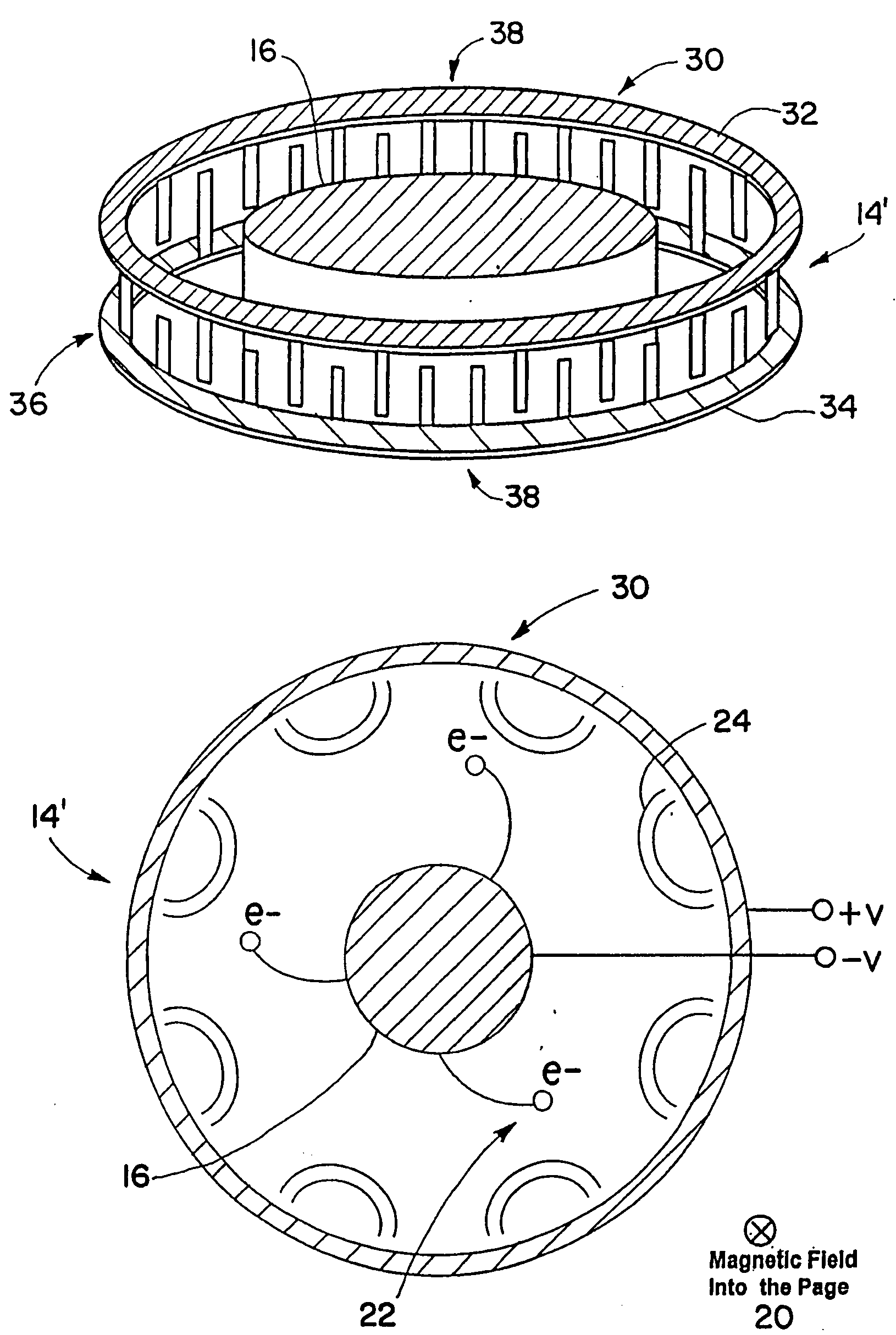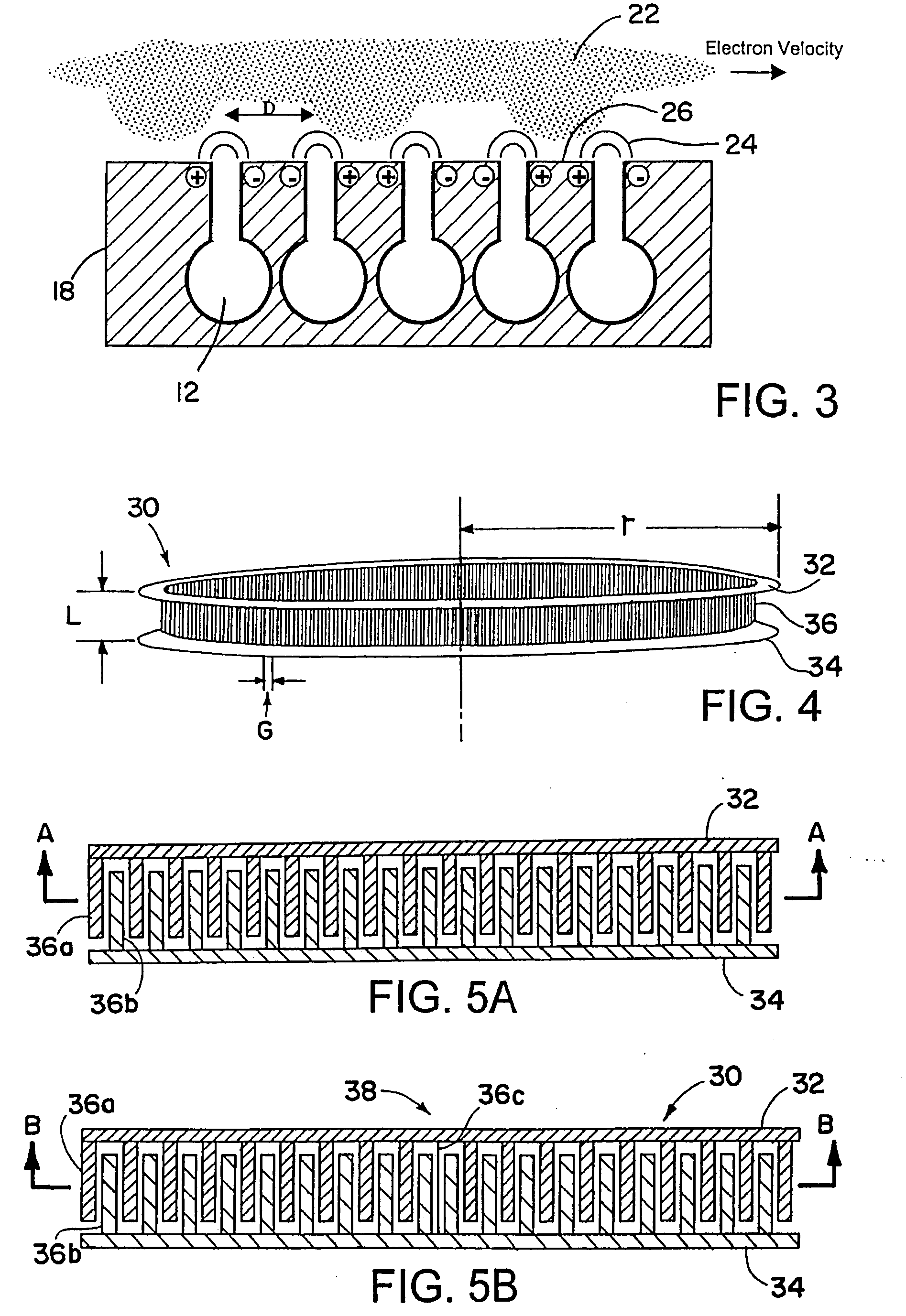Optical magnetron for high efficiency production of optical radiation and related methods of use
a high-efficiency, optical radiation technology, applied in the field of light sources, can solve the problems frequency and power limitations of conventional magnetron designs, and the oscillator will jump about in frequency and power level in an uncontrolled manner
- Summary
- Abstract
- Description
- Claims
- Application Information
AI Technical Summary
Benefits of technology
Problems solved by technology
Method used
Image
Examples
Embodiment Construction
[0065]The following is a description of the present invention with reference to the attached drawings, wherein like reference numerals will refer to like elements throughout. To illustrate the present invention in a clear and concise manner, the drawings may not necessarily be to scale.
[0066]The applicants have discovered that large anodes, e.g., anodes with a circumference larger than one free-space wavelength, exhibit traveling waves along the inner circumference of the anode. In other words, the surface of the anode supports creeping waves that propagate around the circumference of the anode in both clockwise and counterclockwise directions. The traveling waves change phase as they travel around the anode and, at certain operating frequencies, look like standing waves, e.g., they are in phase with themselves as they complete one revolution around the anode. These stationary or standing modes perturb and control the phase of the individual resonators, thereby making pi-mode operat...
PUM
 Login to View More
Login to View More Abstract
Description
Claims
Application Information
 Login to View More
Login to View More - R&D
- Intellectual Property
- Life Sciences
- Materials
- Tech Scout
- Unparalleled Data Quality
- Higher Quality Content
- 60% Fewer Hallucinations
Browse by: Latest US Patents, China's latest patents, Technical Efficacy Thesaurus, Application Domain, Technology Topic, Popular Technical Reports.
© 2025 PatSnap. All rights reserved.Legal|Privacy policy|Modern Slavery Act Transparency Statement|Sitemap|About US| Contact US: help@patsnap.com



